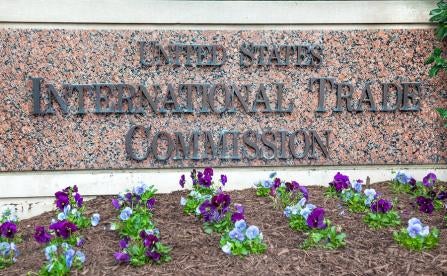On April 18, 2018, the International Trade Commission (“Commission”) reversed an Administrative Law Judge’s (“ALJ”) finding that a litigation funding agreement broke standing for a complainant at the ITC. In Certain Audio Processing Hardware, Software, and Products Containing the Same, Inv. No. 337-TA-1026 (the “1026 investigation”), the ALJ issued an initial determination (“ID”) that found that Complainant Andrea did not have standing to assert the 6,363,345 (“the ’345 patent”) against Respondent Apple without joining AND34. AND34 and Andrea entered into a Revenue Sharing and Note Purchase Agreement (“RSNPA”) to fund Andrea’s enforcement activities. But on review, the Commission found that the ALJ’s ruling was error, and reversed that portion of the ID, and instead found that the RSNPA between Andrea and AND34 did not break Andrea’s standing.
At the Commission, as in federal court, a patentee must satisfy the standing requirements when bringing a patent infringement action. “[C]onstitutional standing in a patent infringement suit depends on whether a party can establish that it has an exclusionary right in a patent that, if violated by another, would cause the party holding the exclusionary right to suffer legal injury.” The dispositive issue usually is who owns the patent. Where a patentee has an exclusive licensee, the “decisions on standing concern whether an exclusive licensee under a license agreement has standing to enforce a patent.” This analysis must determine if the patent owner transferred “all substantial rights” to the licensee. The “all substantial rights” analysis is guided by a non-exclusive list of factors known as the Azure factors. Azure Networks, LLC v. CSR PLC, 771 F.3d 1336, 1343 (Fed. Cir. 2014) (judgment vacated on other grounds).
The ID found that Andrea did not have standing to assert the ’345 patent without joining AND34, because Andrea did not retain “all substantial rights” in the ’345 patent due to the RSNPA. The analysis focused on the perspective of the rights Andrea retained, not on the rights AND34 possessed. To arrive at this conclusion, the ID considered the Azure factors and found several weighed against Andrea, such as factor number five―the right to receive a portion of the proceeds from litigating or licensing the patent. According to the ID, several provisions in the RSNPA “significantly diminish[ed] Andrea’s exclusive right as a patentee to sue infringers and license the patent.” In addition, the ID found the parties’ Common Interest Agreement (“CIA”) confirmed their relationship was one of a joint venture to monetize the patent, not a creditor/lender. The ID found that “constitutional standing was not at issue and the appropriate question here [was] whether Andrea satisfie[d] the criteria for standing by possessing all substantial rights in the patent.” Moreover, the ALJ dismissed a previous ruling in Investigation 337-TA-949, finding that the question in that investigation was different and thus did not pertain to the critical standing question in the 1026 investigation.
The Commission reversed the ALJ’s determination and held that Andrea alone had standing to assert the ’345 patent because by the terms of the RSNPA AND34 was, at most, a non-exclusive licensee. The Commission faulted the ID for disregarding the constitutional standing requirement and jumping right to the “all substantial rights” analysis. In failing to determine if AND34 was an exclusive or nonexclusive licensee, the ID ignored the critical consideration that the Azure factors only kick in if the patentee has issued a non-exclusive license. But for completeness, the Commission concluded that even if the Azure factors were applied, Andrea retained “all substantial rights” in the patent under the RSNPA. For example, factor one—the nature and scope of the right to bring suit—weighed in Andrea’s favor, because Andrea retained control of its litigation strategy and was not limited on how to pursue the patent’s monetization efforts. The Commission expressly disagreed with the ID in the consideration of several factors, such as factor two, the exclusive right to make, use, and sell products or services under the patent. The Commission determined that under the RSNPA, Andrea was not stripped of its exclusive right to make, use, and sell products and services, because AND34 could not grant non-exclusive licenses until a change of control or event of default occurred. The Commission, quoting the Federal Circuit, stated that a “future interest[] in a patent [is] insufficient to find an exclusionary interest exists.” Similarly, for factor seven—the ability to supervise or control licensee’s activities—the Commission faulted the ID for basing its conclusion on mere speculation; what may happen if and when an event of default occurs.
In this decision, the Commission has clarified the effect of a litigation funding agreement on a party’s standing in patent suits at the Commission, and should lead to fewer challenges by accused infringers where a litigation funding agreement is in place.





 />i
/>i
